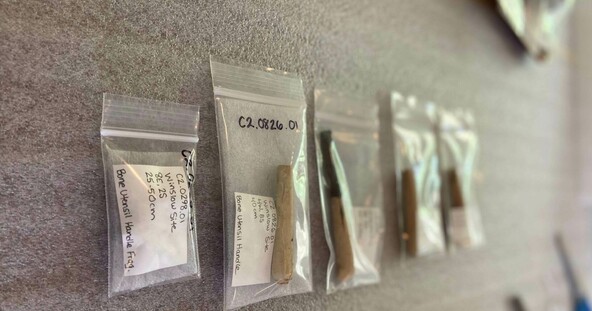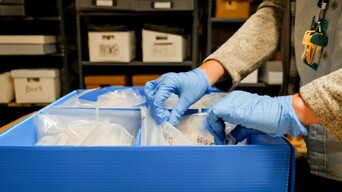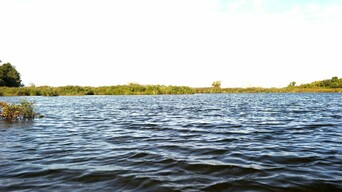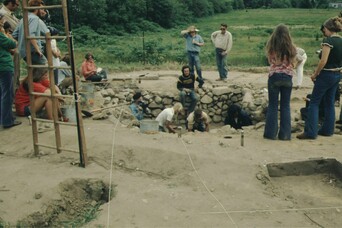
Archaeology
Archaeology at Plimoth Patuxet Museums
Plimoth Patuxet Museums is one of the most significant repositories of archaeological material from 17th-century Massachusetts, offering insight into early colonialism. The Museum cares for the artifact assemblages and associated field data from over two-dozen archaeological sites local to Plymouth County. These collections shed light on the Wampanoag peoples’ history, the development of Plymouth Colony, and the interaction between the two.
Currently, the Collections Department is working hard to digitize archaeological assemblages for public access.
Archaeological Sites

The RM Site
The RM archaeological site, also known as C-1, is a mid- to late-17th century fortified dwelling house likely lived in by the Faunce family.
The Winslow Site
The Winslow archaeological site, also known as C-2, is a mid- to late-17th century house and attached dairy where Josiah and Penelope Winslow (nee Pelham), their children, extended family members, indentured servants, and laborers lived and worked.

The Eel River Farm Site
The Eel River Farm Site represents a seasonal coastal Wampanoag village with quartz tool manufacturing areas. The site chronicles how the Wampanoag people live on this landscape.

The Allerton-Cushman House Site
The Allerton-Cushman House Site, designated C-21, reflects the house and home of two generations of an extended family.
NAGPRA Compliance
The Collections Department is committed to repatriation and NAGPRA compliance. If you'd like to submit a repatriation request, or have any questions or concerns regarding NAGPRA-sensitive material online, please reach out to the Collections Manager, Annie Greco, directly at agreco@plimoth.org.
Have You Uncovered Artifacts?
If you have uncovered artifacts and suspect an archaeological site nearby, please do not disturb the landscape nor remove the artifacts from the ground. Help us preserve the history of this landscape and be respectful of Indigenous cultural heritage. Please record the location and report the finding to the Massachusetts Historical Commission and local Tribal authorities.